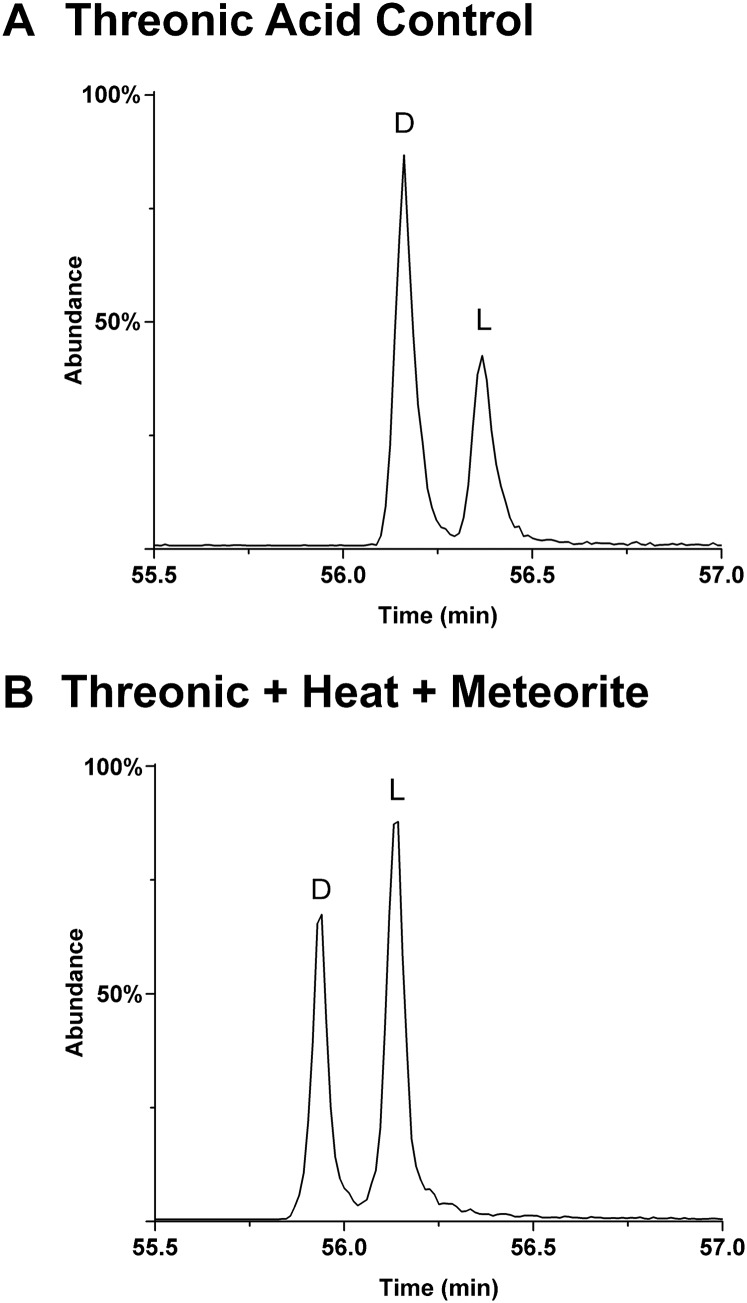Fig. S9.
Chromatograms showing microbial action on a standard mixture of dl-threonic acid. (A) Control sample containing only the standards in water. (B) The results of sustained microbial action on the same mixture after addition of a small amount of Murchison meteorite powder and incubation at 37 °C for 5 days. There is clearly preferential consumption of the d enantiomer. Theoretically, such an effect would lead to excesses of the l enantiomer (opposite to the meteoritic results in Table 1) if microbial consumption of meteoritic threonic acid under ambient (dry) meteorite storage conditions was significant; incubation results were similar for other polyol standards. In the case of dl-arabinonic acid, where the l enantiomer is biologically dominant, microbes indeed consumed more of the l enantiomer: ∼2–3 times less l is present (relative to d) after 10 days. However, all observed soil or contaminated meteorite samples show an excess of the l-arabinonic enantiomer (e.g., Fig. 4B, Lower). Such results indicate that preferential microbial consumption of enantiomers are unlikely to be significant, at least in the present results.

